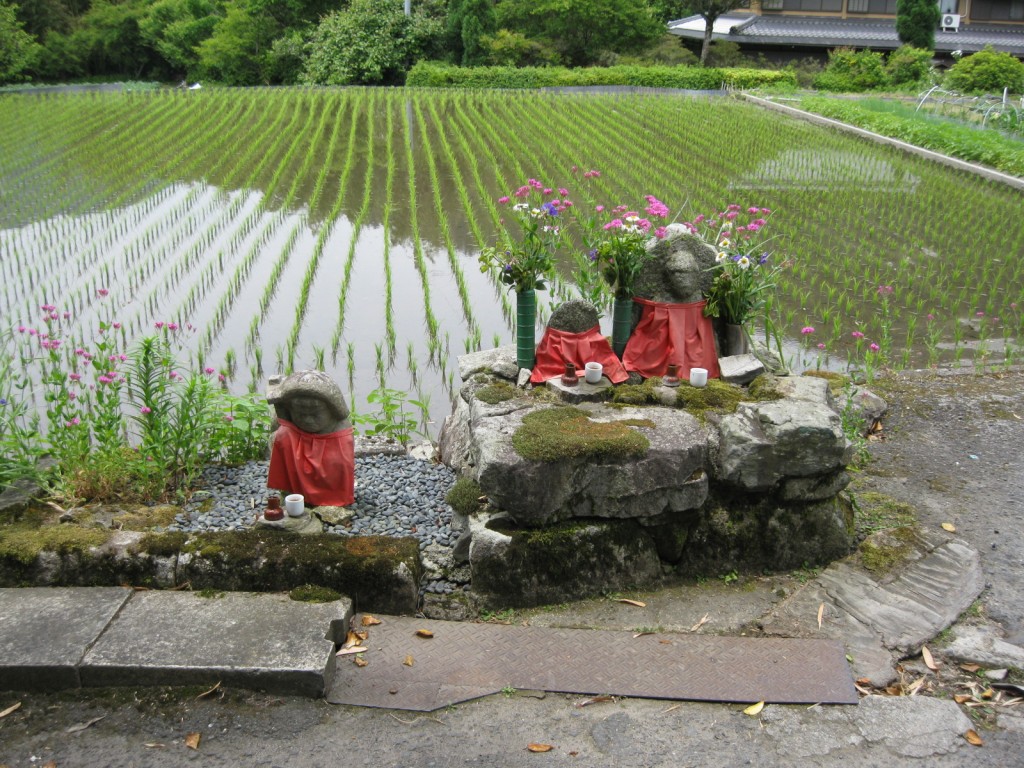
Wet rice cultivation
People often associate Shinto with reverence of rice. The yearly cycle rotates around the planting and harvesting of the crop, and rice is seen as central to the Japanese identity. In addition, rice wine in the form of saké plays a vital part in offerings and celebrations when it’s known as ‘omiki‘. However, wet-rice cultivation could not take place without water, and its vital role in sustaining life has been recognised and celebrated in Shinto since ancient times. In the passage below, written jointly with Timothy Takemoto of the Shinto Online Network, we look at the importance of water in the religion.
**********************************************************************
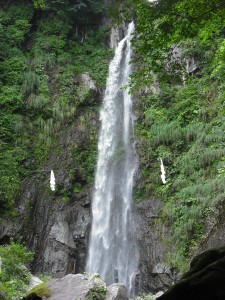
Waterfall in Tohoku
The vital role of water is acknowledged in most religions, both as a means of cleansing and as an essential component of life. In Shinto, water holds a particularly important place. It not only acts as a means of purification, but its life-giving nature is recognised in offerings to the kami. The significance is underlined by every visit to a shrine, because before entering the precincts visitors wash their hands and mouth at a wash-basin.
According to the Greek philosopher, Heraclitus, the primary element is fire. In Shinto mythology, however, it is water. This may be because in a wet field rice-based economy such as Japan, water was essential to the production of food. And for early Japanese the crystal clear streams pouring down from the mountainside seemed like a blessing from the gods. From ancient times poets have written of the wonder of springs, wells, and rushing waterfalls.
In Kojiki, it is said that the first gods grew out of water, like blades of grass, and that the first land was raised out of the primal sea. The sun goddess and her siblings were born from drops of water which fell from the eyes, nose and mouth of their father, Izanagi. And the imperial gods of Japan were formed from the water sprayed from the mouth of the sun goddess over the well at the centre of heaven.
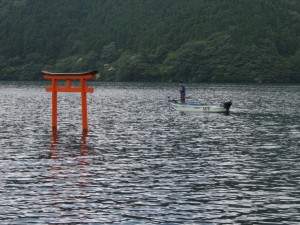
Torii set in a lake, a reminder of how important travel by boat was in Japan's past
As in other animist religions, water spirits play an important part in Shinto lore. And purification rites include cold-water immersion known as misogi. This is based on the idea of merging with nature through entering into the flow of water. It carries with it the universal flow of life that pervades the universe.
The offering of water at the kamidana is therefore a recognition of its special properties. Out of respect to the kami, it should be as fresh as possible and changed every day. Water is mysterious, fluid, and magical. As we know from the Tohoku tsunami, it can be powerful enough too to destroy life. ‘Don’t it always seem to go that you don’t know what you’ve got till it’s gone,’ sang Joni Mitchell, and Shinto tells us that we should never take the gift of water for granted. When making the offering therefore, it is appropriate to be mindful of its special character and to be grateful for its blessings.
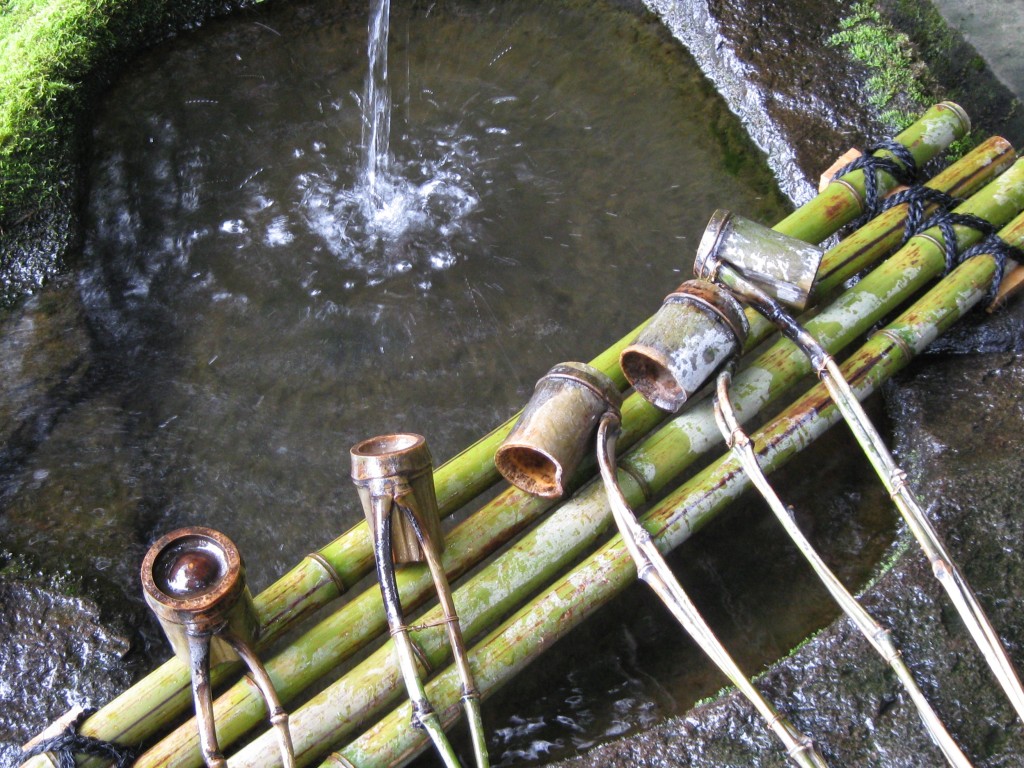
Ceremonial use of water every time you visit a shrine
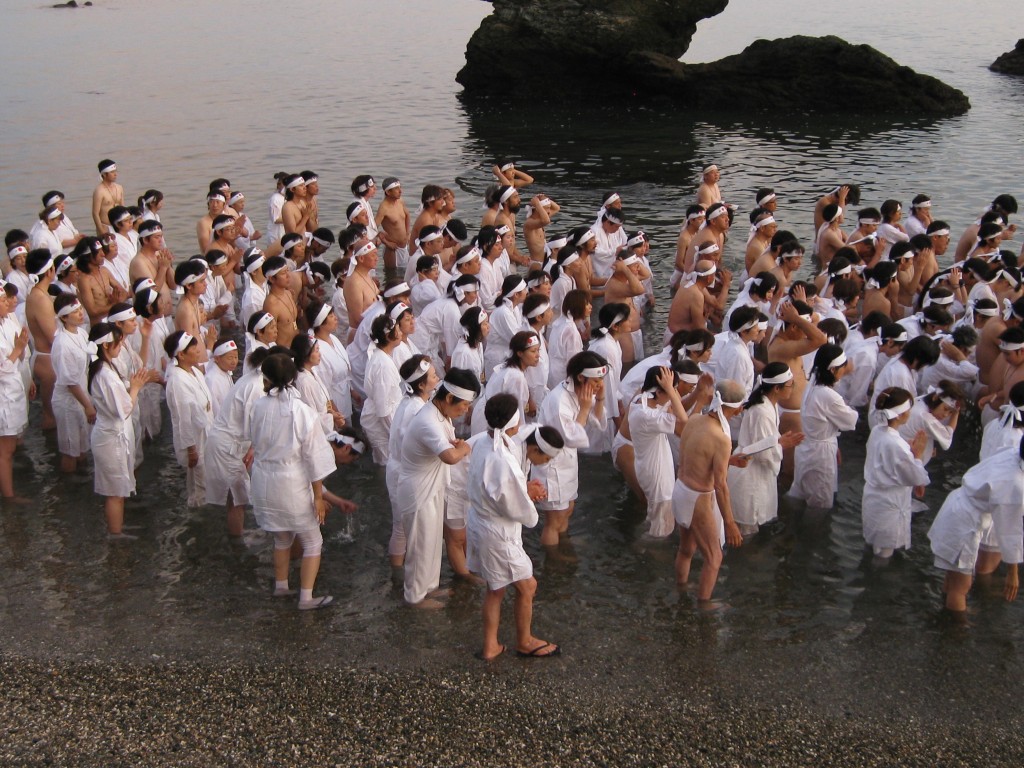
Immersion in the cosmic flow: misogi in the Pacific at meoto iwa near Ise

Leave a Reply